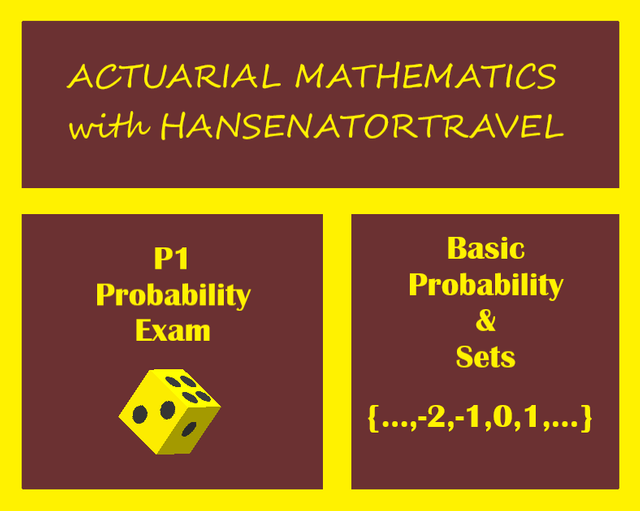Probability (P1 Exam Practice) - Sets and Basic Probability
Actuary Exam P1 Practice

This can also work for high school probability and statistics! The P1 is the first test most actuaries take. I am studying for this exam right now, so I decided to help everyone else out as well! The first section will be about basic probability, including sets and Venn Diagrams. Enjoy!

Unions and Intersections
 - Union - Take everything from both sets (non-repeating).
- Union - Take everything from both sets (non-repeating).
 - Intersection - Take only what both sets have in common.
- Intersection - Take only what both sets have in common.
Example:

Disjoint sets have no common elements!

Counting Principles
If Pr means "probability" and N means "number of elements", then
Mutually Exclusive (Disjoint)
Not Mutually Exclusive (Common Elements Exist)

We subtract the intersection because you are counting each common element twice because they lie in both sets A and B.

Compliments

In probability,

This makes sense because the total probability can only add up to 100% or 1.
Compliments of Three Sets

Distributive Laws

DeMorgan's Laws

Probability Examples
Example 1
When rolling two dice, what is the probability that you will roll a multiple of 3 or an even number?
We can fill in tables and use the Union (Or) operator then count (or you can think of it mentally, but the graphic, similar to the Venn Diagram, is a nice perspective).

Now basic math takes over, remember that the probability is the part divided by the whole, so we have:

We can prove this with our formula too!

Example 2
When rolling two dice, what is the probability that you will roll a multiple of 3 and an even number?
We can answer this the same way, but use the Intersection (And) operator and take what they have in common.

Therefore,

Example 3
Jonah conducts a survey about people and their eating habies, specifically when they eat dinner. Here were the results:
- A = Between 3 & 6 pm
- B = Between 6 & 8 pm
- C = Between 8 & 11 pm
- D = Don't eat dinner usually
- What is the probability a person does not eat between 6 & 8?

- What is the probability that the eat between 3 & 8?

- What is the probability that they eat dinner?

- What is the probability that they do eat dinner or they eat between 6 & 8?

- What is the chance a person eats during a three hour interval?


Probability Axioms ("Truths")

The probability of an event can never be zero or negative.
The probability of the sample space is always 1.
The sum of the union of all events is equal to the sum of the probabilities of all events.









